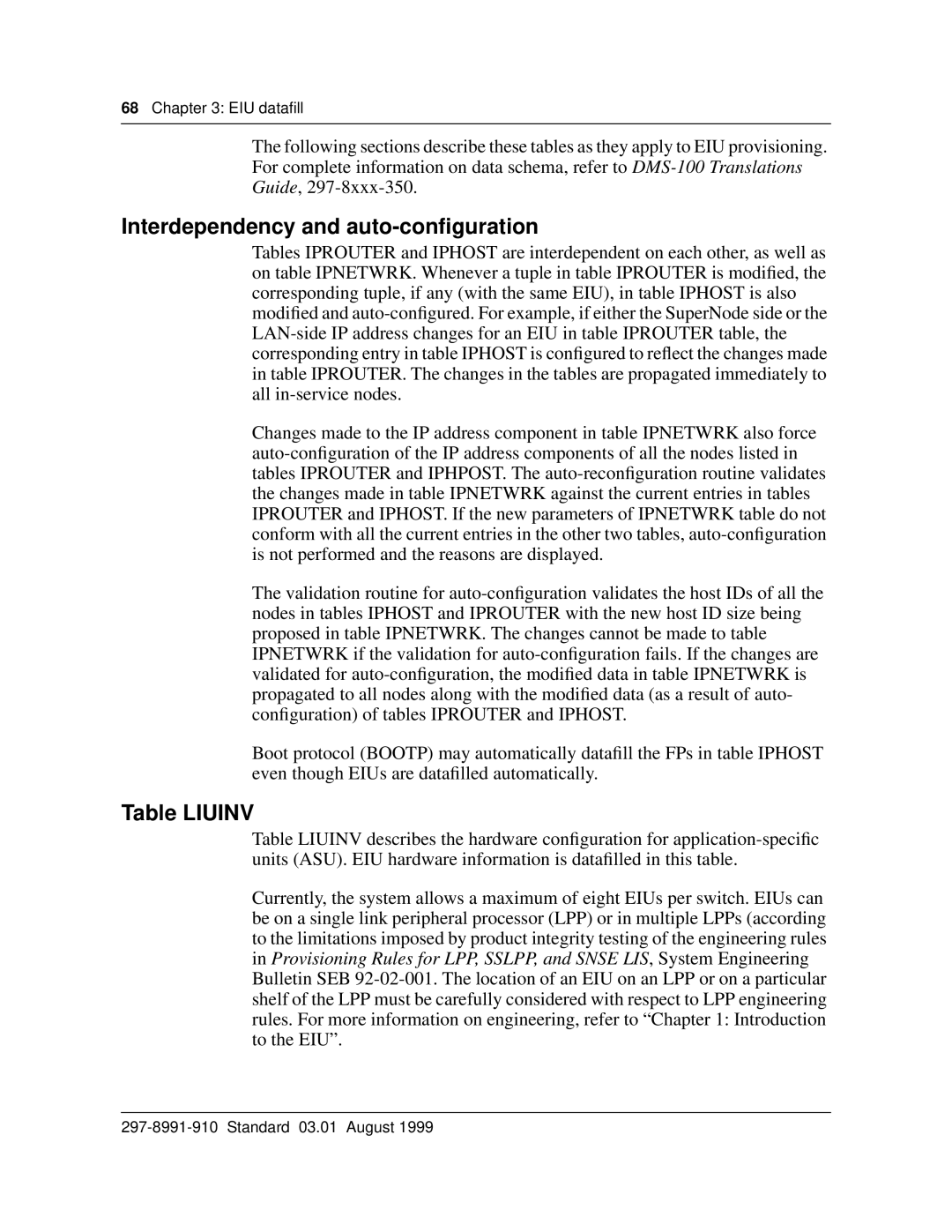
68Chapter 3: EIU datafill
The following sections describe these tables as they apply to EIU provisioning. For complete information on data schema, refer to
Interdependency and auto-configuration
Tables IPROUTER and IPHOST are interdependent on each other, as well as on table IPNETWRK. Whenever a tuple in table IPROUTER is modified, the corresponding tuple, if any (with the same EIU), in table IPHOST is also modified and
Changes made to the IP address component in table IPNETWRK also force
The validation routine for
Boot protocol (BOOTP) may automatically datafill the FPs in table IPHOST even though EIUs are datafilled automatically.
Table LIUINV
Table LIUINV describes the hardware configuration for
Currently, the system allows a maximum of eight EIUs per switch. EIUs can be on a single link peripheral processor (LPP) or in multiple LPPs (according to the limitations imposed by product integrity testing of the engineering rules in Provisioning Rules for LPP, SSLPP, and SNSE LIS, System Engineering Bulletin SEB
